From David Krut's website: "As a reader and an occasional writer of poetry and short stories, she has a sharp interest in language, as intimated by her titles. For her, writing runs parallel to making, and titles precede, or prompt, the actual artwork." Her latest solo exhibition – for which she collaborated with the team at the David Krut print workshop – is up at David Krut Projects. It is named Omens in hot bacon contradiction, a title that already had us yearning to learn more, so we sent the artist some questions. Of course, in life as in art, there are no easy answers. Keep reading.
"The title needed to come down the street and force itself up your nostrils. Bacon."
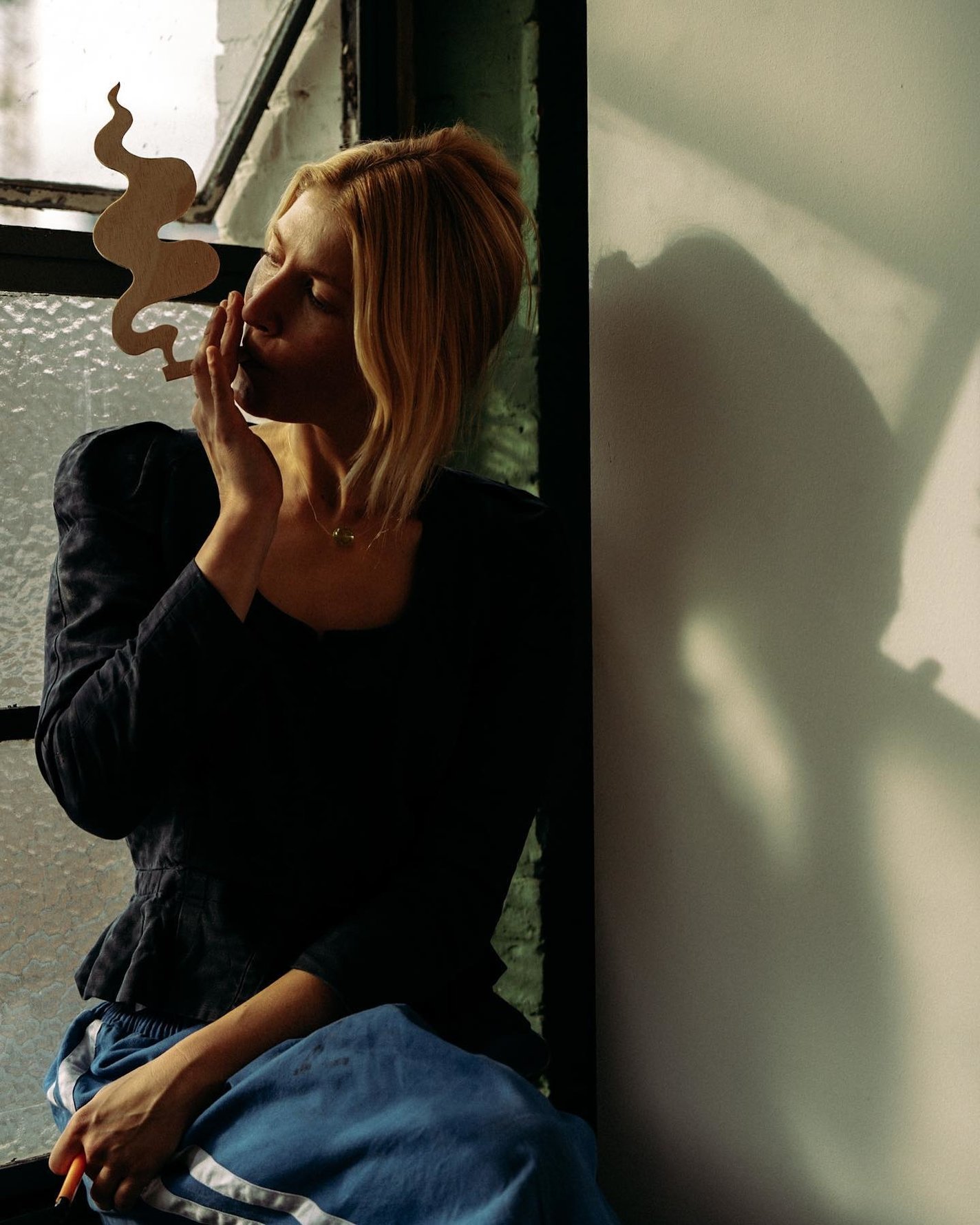
Omens in hot bacon contradiction. Where does the name of your latest exhibition come from?
The exhibition title is a combination of a few of the individual artwork titles, to wind together different threads of the show. The concept of omens, an interest in symbolic intelligence and iconography, and a sense of foreboding, and clues. For a while it was just 'hot contradiction' which speaks for itself, but I needed more salt, more pungency. The title needed to come down the street and force itself up your nostrils. Bacon.
Your art is concerned with social interactions...
Broadly, people and their interior worlds; worlds and their politics. Politics entering interior worlds that look vastly different to one another, their powers becoming subject to a mind and its leaps.
You capture the subtlety and nuance of social interactions. Why is this important?
Thank you, I try my best. Everything can change with the snap of a twig. Blink and the twig is remade, breathe and it snaps again, the scene is rearranged, the memory changed forever, a layer in an ever building archaeology... I don't know. I think it's an important constituent to compassion and open-mindedness.
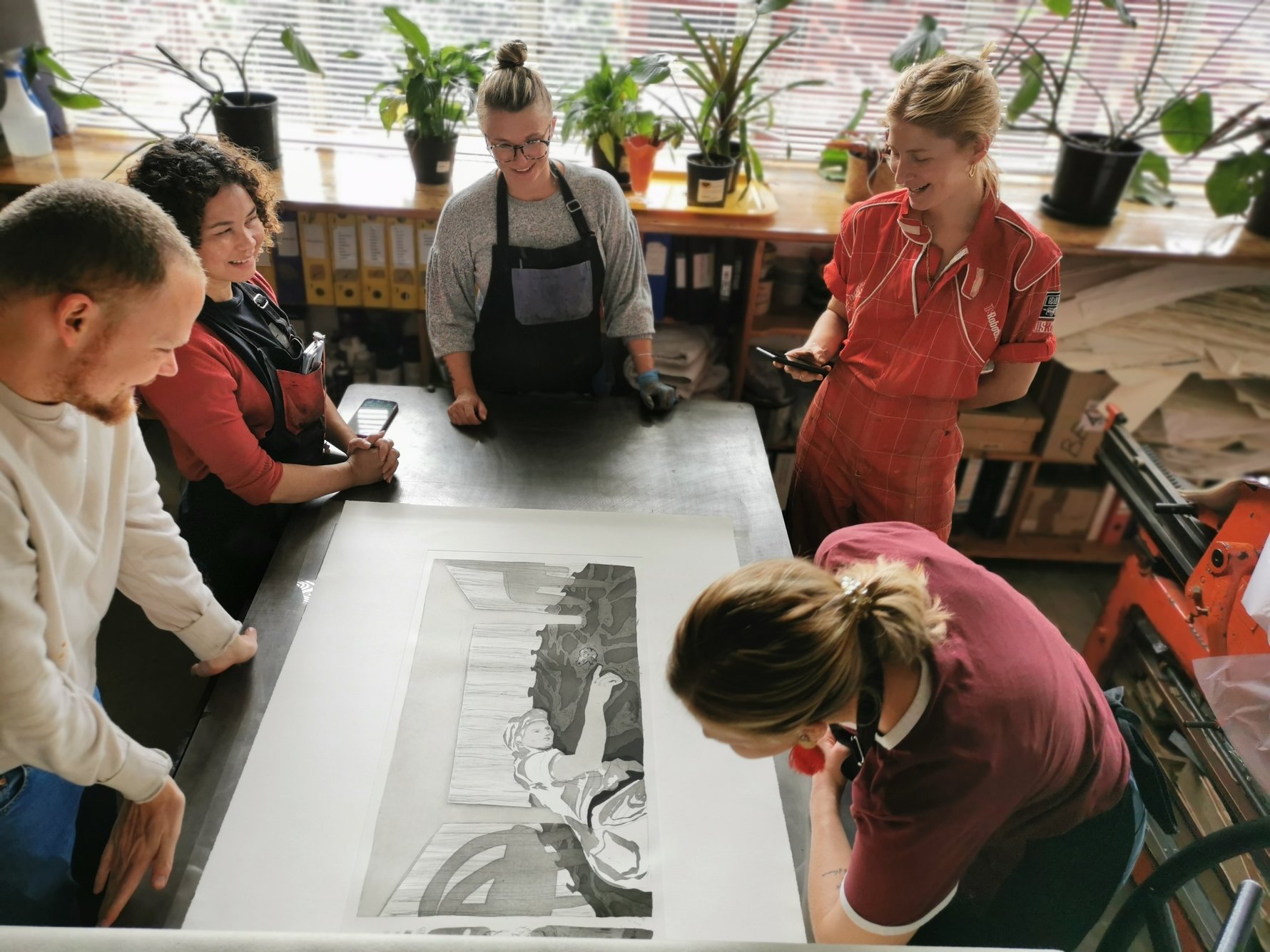
Photo: David Krut Projects.
Your work displays a fascination with the table, and this has a long history. Tell us about it.
Hannah Arendt, historian and political philosopher, writes in The Human Condition [2e, Chicago & London: The University of Chicago Press]: “The public realm, as the common world, gathers us together and yet prevents our falling over each other, so to speak. What makes mass society so difficult to bear is not the number of people involved, or at least not primarily, but the fact that the world between them has lost its power to gather them together, to relate and separate them. The weirdness of this situation resembles a spiritualistic seance where a number of people gathered around a table might suddenly, through some magic trick, see the table vanish from their midst, so that two persons sitting opposite each other were no longer separated but also would be entirely unrelated to each other by anything tangible.
Yes, my long table has a fascination with history. I'd been researching and trying to make links between the table and tableaux. The object originally being understood as a site for inscription (language) or games. But mostly I was more interested in our interdependence on this ubiquitous object as a stage with an extra, subterranean dimension, a common ground that prescribed scripts for interaction and hierarchy, around which any number of scenarios can play out.
What's on the table and what goes on under the table and hidden from plain view?
The 'under the table' is interesting in a literal, direct way, in terms of body language and underhand dealings, but more so it's a way of representing an unseeable, subterranean subconscious, as revealing and mystifying as that might be. Sometimes it explains the thing above in starker terms; other times it seems to be informed by a logic entirely foreign. In that way, the under space is a bit like dreams, which can sometimes be obvious, easy to decipher, and help you understand what's on your mind. But sometimes they can be more like 'where the fuck did that come from? It makes no sense at all.' And yet there it is, presenting itself for inspection. The table top is different, about language and games.
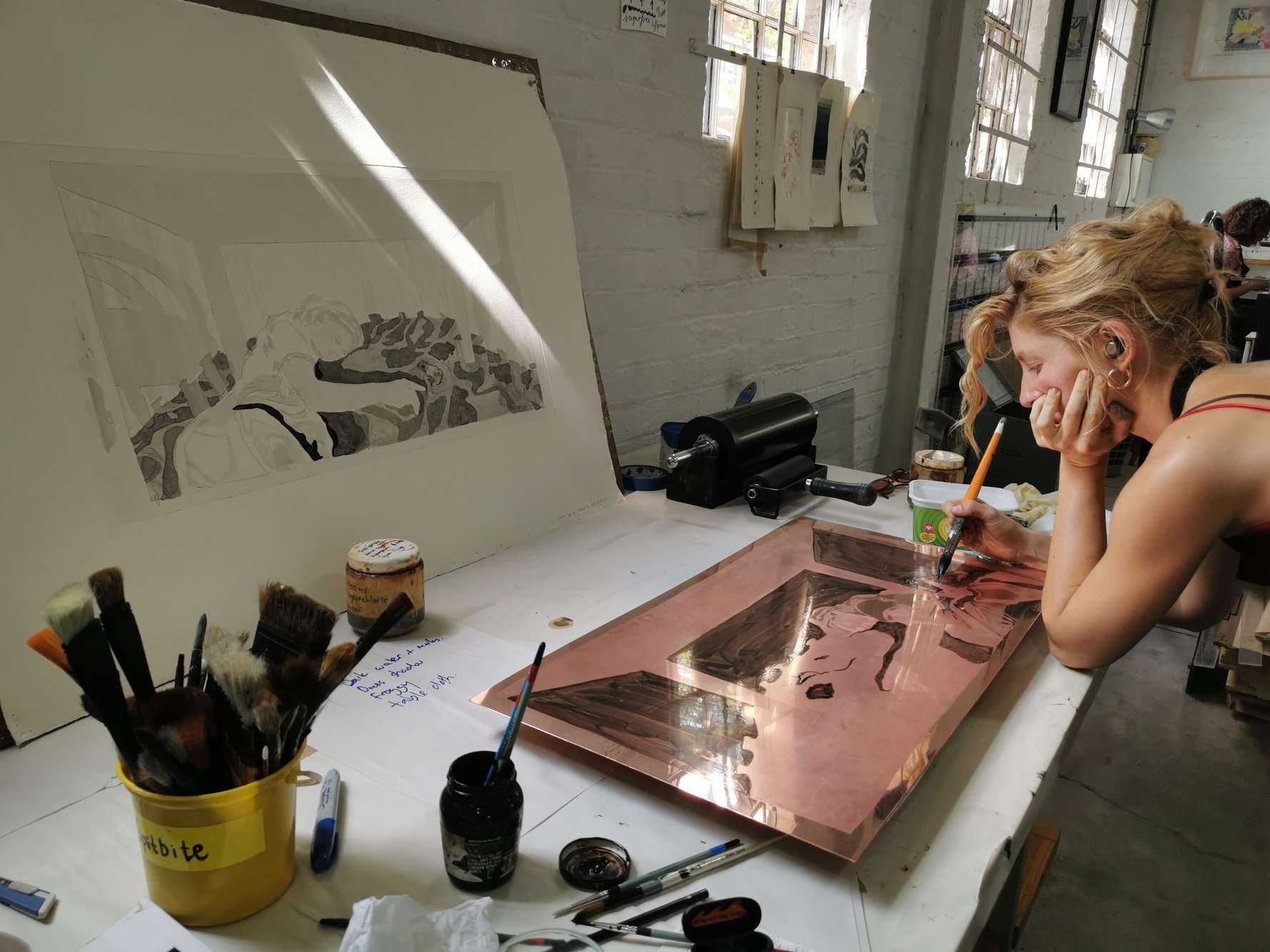
What has inspired you in the time you have spent in Johannesburg?
Working in the city, being in Maboneng [where the David Krut print workshop is located] and going for lunchtime walks, being next to the Centre for the Less Good Idea as they workshopped performances. It's [the city] a stranger-than-fiction place, with paradoxes so stark and, at times, funny, one wouldn't dare write them for fear of being on the nose. Also, seeing different pockets of the city via the beds and couches that hosted me. Such a privatised city, and also so ready to welcome [one] into the private space. The printmakers in the workshop and their knowledge for print, the traditions therein, and the importance and relevance of the medium in South Africa.
"I find printmaking studios, in their cleanliness and concern for archivability, to be spaces that preserve time, smooth it, and feel unchanged even when they are."
Do you have a favourite piece in your Omens in hot bacon contradiction body of work or perhaps a piece you enjoyed creating most?
No, no. In my mind they are very much stepping stones and entangled in one another in an inseparable way, so that the enjoyment of one is contingent on something in another. I loved being in the environment of the studio with my colleagues, and seeing how harmoniously they work together.
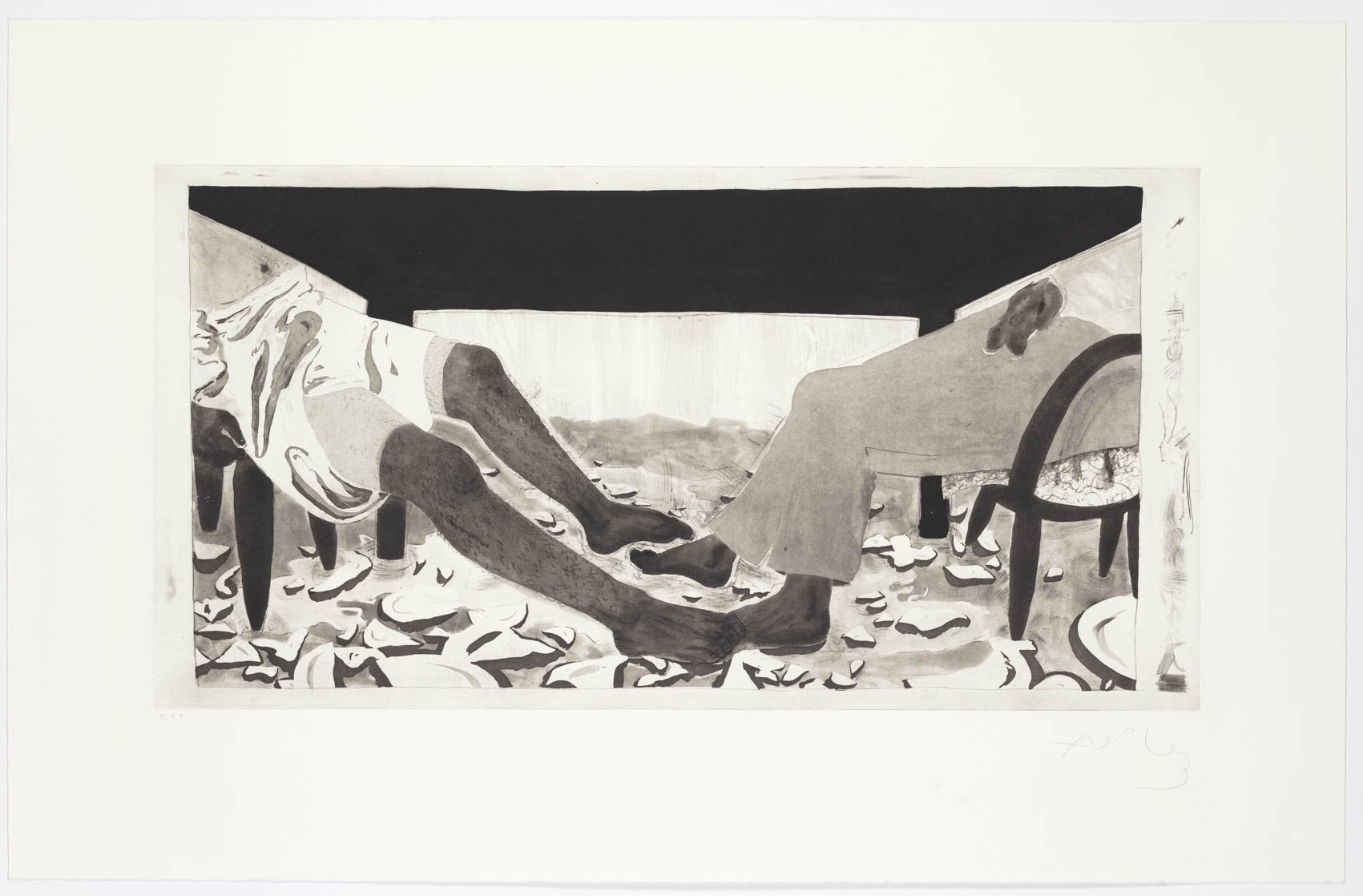
Photo: David Krut Projects.
You are an artist that has worked in many mediums – which do you find the most challenging, and why?
Painting... mostly because I struggle to answer the question of 'why paint' and cannot trick myself into finding the medium relevant for myself. So not the verb – painting itself can be pure, simple fun – but Painting.
If you had to pick just one medium in which to work what would you choose, and why?
I'd like to say ideas or language. These come first for me, and tend to determine the medium. So if I had to choose, then this, and maybe material is not important at all. But life is long and I like to make things, and wood can keep both hands and mind busy and content. So, for a better life, wood.
"You can do things in print that you can do in no other way, but if you aren't familiar with the medium and techniques you need to borrow bits of someone else's brain and someone else's hands, and trust and talk, and give up control, and be open to learning from whatever surprising result the process yields."
Where do the scenes in your work start? Is it in your daily life, a concept or idea you are trying to illustrate, or does it happen in the process?
I have funny ways of contriving mental visualisations to work from, pieced together from all other the above.
This is your second time collaborating with the team at David Krut Projects. In what ways was it different compared to your first stint with them?
The first was in 2021, during a semi-lockdown. Then I came in October 2022 and January/February 2023. The city is different, and I've been in very different phases of life and mind each time. But I find printmaking studios, in their cleanliness and concern for archivability, to be spaces that preserve time, smooth it, and feel unchanged even when they are.
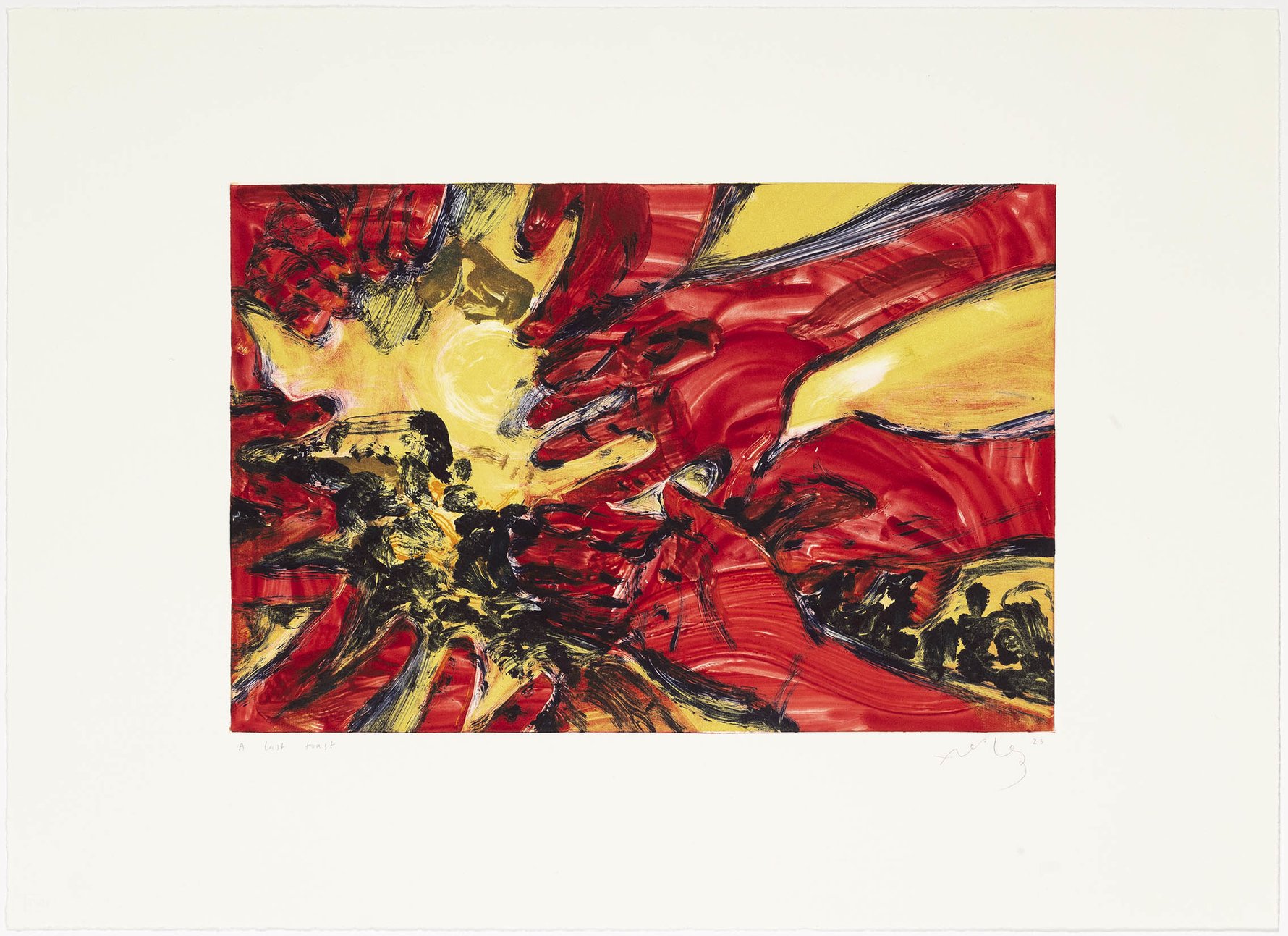
You worked closely with Roxy Kaczmarek. What ways of seeing and working did she bring to the table?
Roxy is a powerhouse. She's an excellent technician, knowledgable, attentive to detail and able to remember things backwards in the way that is necessary in print. But she's also full of energy, a great communicator, and both honest and supportive. Working with people you can trust like that is invaluable.
As someone who is fascinated by social interactions, how would you describe the collaborative process of art-making at David Krut?
There's a series of books about the 'Magical Secrets' of printmaking. There are a few books – one just about aquatint, for example. One is about creativity but really it's about the relationship between artist and printmaker. So the answer to this question, it's really a whole book. You can do things in print that you can do in no other way, but if you aren't familiar with the medium and techniques you need to borrow bits of someone else's brain and someone else's hands, and trust and talk, and give up control, and be open to learning from whatever surprising result the process yields.
You are currently based overseas. Tell us more about that and your experience of being a South African artist elsewhere.
I just moved to Brussels. I think... I am Brussels's girlfriend?
You’ve held residencies all over the world. What stands out about the art scene in Johannesburg?
The amount of large buildings occupied by artists. Big rabbit warren urban studios, resilient bursts of robust microcosms on the bleached reef. These spaces are crucial and must be supported.
You started lecturing a printmaking course at Michaelis School of Fine Art this year. What has it been like being the teacher?
It's more fun being the teacher. I learnt... that teaching in one way for all doesn't make sense.
What’s the one thing no one would expect to hear about Joburg?
I heard it but it's unrepeatable.
Your number-one tip for a first-time visitor to Joburg?
Go to all the places with good views to try to understand the city's life through its geography. Looking for the views takes you to nice places, too.
See Omens in hot bacon contradiction at David Krut Projects, until Jul 15, 2023. Be sure to check out our weekly art exhibitions guide for other shows and gallery openings.


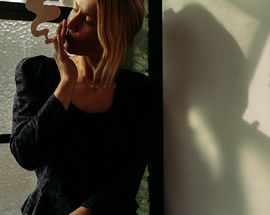

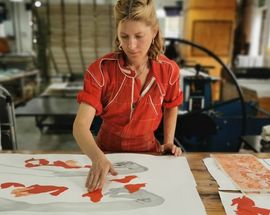


Comments